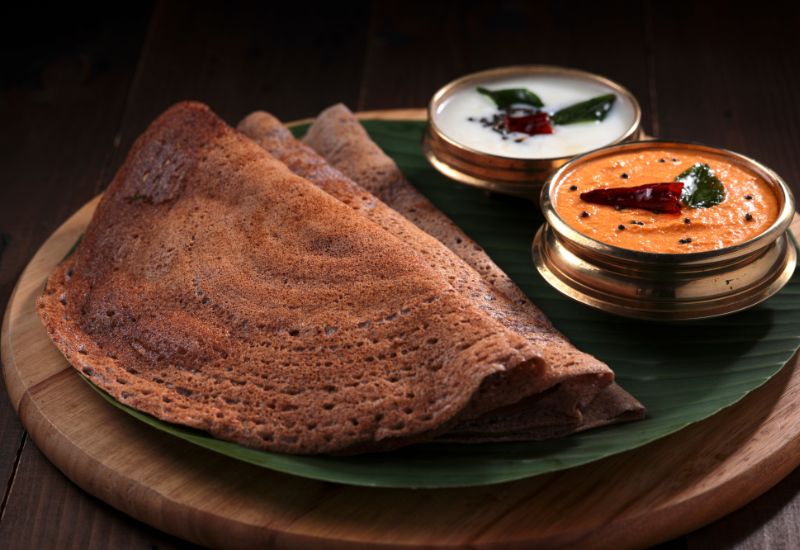Ragi roti, or nachni roti, is a nutritious, rustic flatbread made with ragi (finger millet) and whole wheat flour. Ragi is a versatile ingredient I frequently incorporate into my meals due to its high calcium and protein content. These healthy rotis require minimal ingredients and can be enjoyed with various vegetable or lentil dishes.
What is Ragi roti made of?
Ragi, also known as finger millet, is a gluten-free grain belonging to the millets class. It is commonly used in South Indian cuisine, particularly in Karnataka.
Ragi, a staple grain in this region, is used to make various dishes such as porridge, malt, ladoo, dosa, roti, and healthy biscuits.
In rural Karnataka, ragi mudde and ragi roti are popular staples, especially among farmers. These nutrient-dense rotis are typically eaten at the beginning of the day and help keep hunger at bay. The high fiber content in ragi keeps you feeling full and can aid in weight loss.
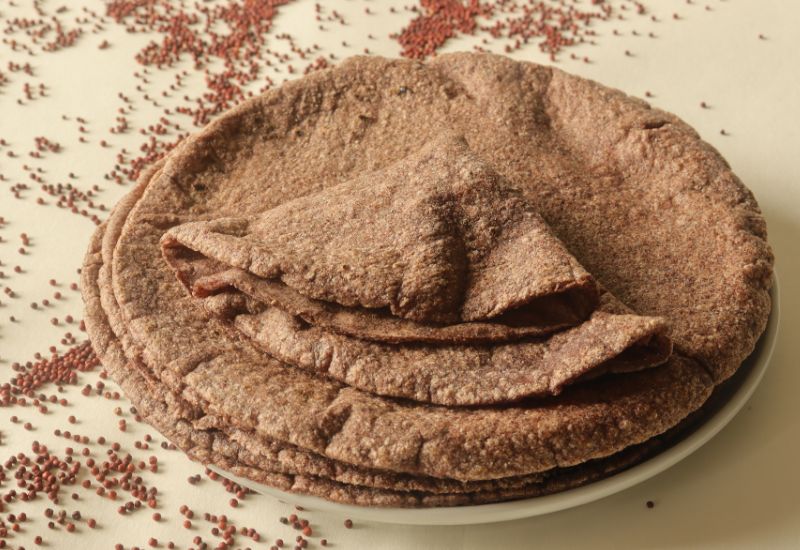
Ragi roti is a gluten-free unleavened flatbread commonly eaten for breakfast or lunch in Karnataka. It is often served with chutney, dal, and pudi.
What is the meaning of Ragi Roti?
Ragi roti, also known as ರಾಗಿ ರೊಟ್ಟಿ in Kannada, is a traditional breakfast dish that hails from the beautiful state of Karnataka in India.
This delightful delicacy has gained immense popularity, especially in the rural regions of southern Karnataka. The star ingredient of this mouthwatering dish is ragi, or finger millet, as it is commonly known.
The ragi flour is skillfully transformed into delectable rotates, best described as ragi pancakes. These routes are a treat for the taste buds and a wholesome and nutritious way to start the day.
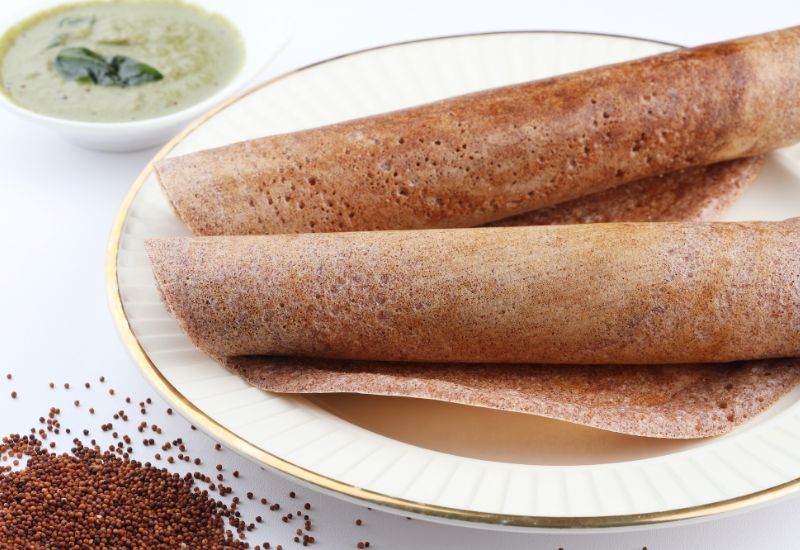
The locals take great pride in their native language, Kannada, as reflected in the name “ragi-rotti,” which translates to ragi-pancake.
So, next time you find yourself in Karnataka, do not miss the opportunity to savor this traditional breakfast delight that genuinely captures the region’s essence.
Is Ragi roti better than wheat roti?
Numerous scientific studies have consistently demonstrated that raagi, a whole grain widely cultivated in India, possesses many health benefits that greatly surpass wheat’s, making it an excellent dietary choice.
One of its most remarkable characteristics is its gluten-free nature, making it an ideal option for individuals with gluten sensitivities or celiac disease.
Moreover, Ragi has been found to actively promote heart health due to its rich nutrient profile, which includes significant amounts of antioxidants and heart-healthy fats.
Additionally, the high fiber content present in Ragi plays a pivotal role in improving digestion by facilitating regular bowel movements and preventing constipation.
This remarkable grain can also be utilized as a noteworthy substitute for those seeking to shed excess weight, as it aids in weight loss by providing a feeling of satiety and reducing hunger pangs.
With all these remarkable qualities, it is no wonder that Ragi has gained popularity as a versatile and highly beneficial grain in nutrition and wellness.
What are the benefits of Ragi Roti?
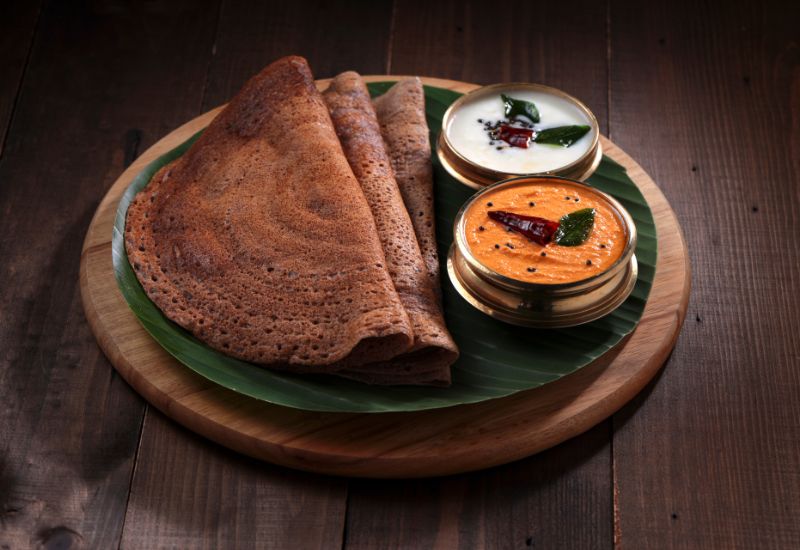
Ragi, or finger millet, is a highly nutritious grain with numerous health benefits. Here are some vital nutritional facts about ragi per 100g:
- Energy: 320Kcal
- Protein: 7g
- Carbohydrates: 67g
- Dietary fiber: 11g
- Calcium: 364mg
- Iron: 4.62mg
Incorporating ragi into your diet can provide the following health benefits:
- High Protein: Ragi is a vegan-friendly source of protein, making it an excellent addition to your diet.
- High Fiber Content: The dietary fiber in ragi promotes proper digestion and metabolism.
- Weight Loss Aid: Ragi’s high protein content helps reduce hunger pangs, keeping you fuller for longer.
- Skin Health: Ragi is rich in antioxidants that help fight free radical damage, promoting youthful and radiant skin.
- Hair Growth: The iron and zinc in ragi contribute to healthy hair growth and prevent hair loss.
- Bone Density: Ragi consumption can help fortify bone density, reducing the risk of fractures and osteoporosis.
- Breastfeeding Support: Ragi can enhance milk production and improve its nutritional value for lactating mothers.
- Diabetes Management: Ragi’s dietary fiber helps regulate blood sugar levels, making it beneficial for managing diabetes.
- Anti-cancer Potential: Ragi contains phytochemicals with potential anti-cancer properties.
- Gluten-Free Option: Ragi is naturally gluten-free, making it suitable for those on a gluten-free diet.
- Children’s Nutrition: Ragi is packed with essential nutrients and can be added to dishes for children to enhance their nutritional value.
- Cardiovascular Health: Ragi’s low sodium and cholesterol content, vitamins, and dietary fiber support heart health.
- Anaemia Treatment: Ragi is a good source of iron, which helps combat anemia.
While ragi has numerous benefits, overconsumption may lead to increased oxalic acid levels, which can be problematic for individuals with kidney stones. It is recommended to consume ragi in moderation.
Including ragi in your daily diet can contribute to a healthy and balanced diet, providing protective nutrients against diseases and promoting overall well-being.
Calories in one Ragi Roti
One Ragi Roti (without oil) is a nutritious and calorie-conscious choice, providing 64 calories. These calories can be further broken down into different macronutrients. Carbohydrates, the body’s primary energy source, contribute to 56 calories. Proteins, essential for tissue repair and growth, account for 6 calories. The remaining calories come from fat, precisely 31 calories.
One Ragi Roti fulfills approximately 5 percent of the total requirement for your daily calorie needs. This is based on a standard adult diet of 2,000 calories. By incorporating this delicious and healthy roti into your meals, you can progress towards meeting your nutritional goals while enjoying a satisfying meal.
Can I eat Ragi Roti daily?
Absolutely! Including ragi in your daily diet is safe and incredibly beneficial for your health. Ragi, also known as finger millet, is a highly nutritious whole grain with many advantages:
- It is packed with fiber, which aids in proper digestion and helps maintain a healthy weight.
- Ragi is an excellent source of calcium and iron, essential minerals that support strong bones and prevent anemia. It makes ragi even more remarkable because of its gluten-free nature, making it an excellent choice for individuals with gluten sensitivities or celiac disease.
- Ragi has a low glycemic index, slowly releasing sugars into the bloodstream, providing sustained energy levels, and preventing blood sugar spikes.
By incorporating ragi into your daily diet, you nourish your body with vital nutrients and support your overall well-being.
Can diabetic eat ragi roti?
Individuals diagnosed with diabetes are frequently recommended to incorporate ragi into their diet as a viable alternative to white rice and wheat.
This is because ragi aids in regulating blood sugar and cholesterol levels, thus promoting overall health. Additionally, including dietary fiber in ragi assists in curbing cravings and ensuring a steady pace of digestion, which in turn helps to effectively manage blood sugar levels.
By opting for ragi as a dietary staple, people with diabetes can enjoy the benefits of a balanced and controlled blood sugar level while promoting digestive well-being.
How to make Ragi Roti
Nachni roti is a delicious Indian bread made with ragi, finger millet flour, and whole wheat flour. This combination adds a unique nutty taste and is also very nutritious. Ragi is rich in fiber, calcium, and iron, making it an excellent choice for a healthy diet.
The blend of ragi and whole wheat flour creates a balanced flavor and texture, making it a satisfying meal. Eating these rotis with curry or butter will surely be a hit at any dinner. So why not try this recipe and enjoy the goodness it brings?
| Prep Time | Cook Time | Total Time | Cuisine | Course |
|---|---|---|---|---|
| 15 minutes | 25 minutes | 40 minutes | Indian | Main Course |
To make Ragi Roti, you will need the following ingredients:
- 2 cups ragi flour (finger millet flour or nachni)
- 1 cup whole wheat flour
- 1 teaspoon salt (or add as required)
- 1.5 cups hot boiling water + 1 to 2 tablespoons (or add as required)
- ghee or oil as required
Instructions:
To make the dough:
- Take 2 cups of ragi flour and 1 cup of atta in a large bowl or parat.

2. Add 1 teaspoon of salt (or as required) and mix everything with a spoon.
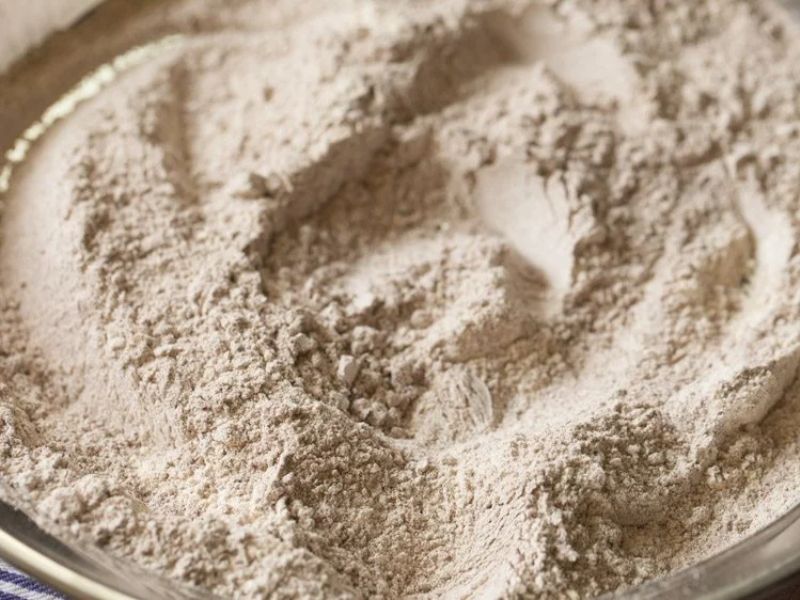
3. Pour in 1.5 cups of hot boiling water and mix well.
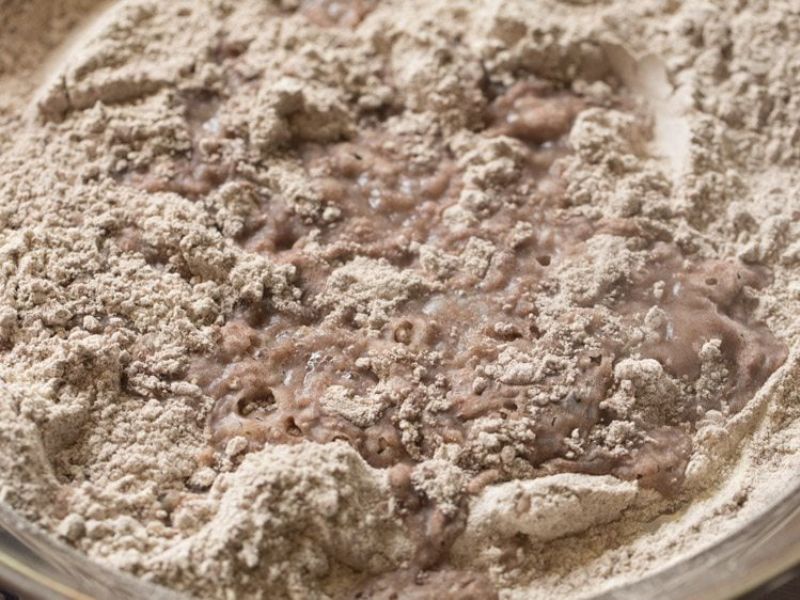
4. Wait for a few minutes until the mixture is cool enough to handle.
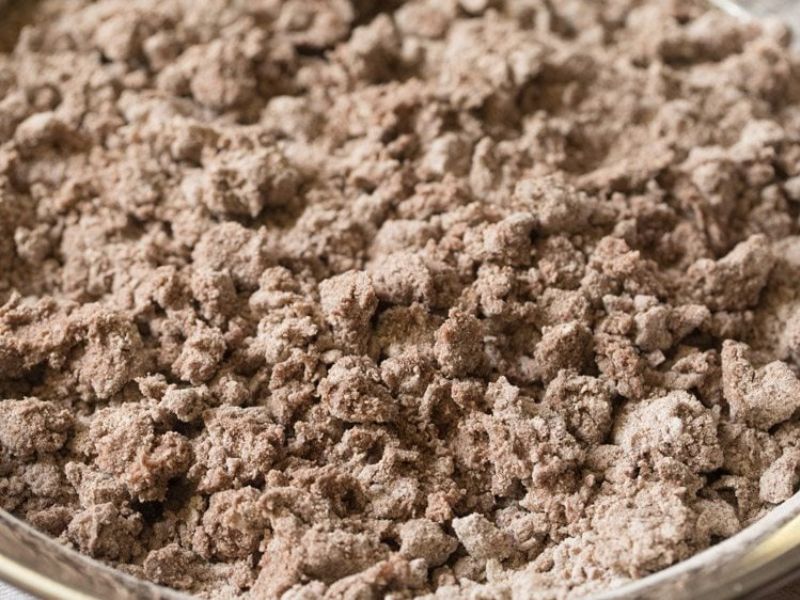
5. Begin kneading the dough while it is still hot. Sprinkle warm water gradually and continue kneading until you achieve a soft dough.

6. Cover the dough and let it rest for 20 minutes. Then, divide it into medium-sized balls.

To roll the Ragi Roti:
- Flatten a dough ball and sprinkle some whole wheat or ragi flour.
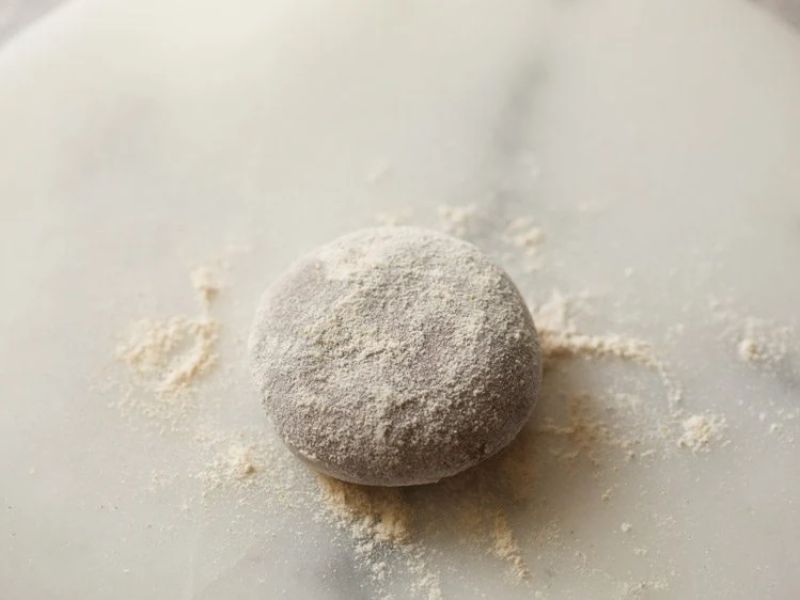
2. Heat a tawa on the gas stove until it becomes sufficiently hot to make soft rotis.

3. Roll the dough ball into a flat round circle, adding more flour to prevent breaking.
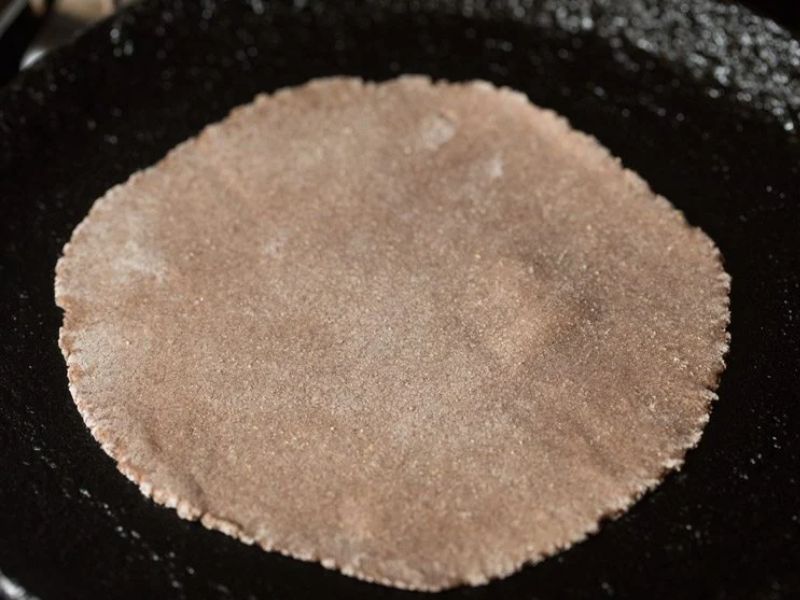
4. If the dough sticks to the rolling pin, sprinkle some flour evenly on the roti and continue rolling.
Cooking the Ragi Roti:
- Place the roti on the hot tawa over a high flame.
- Cook one side until less than half cooked or about one-fourth cooked.
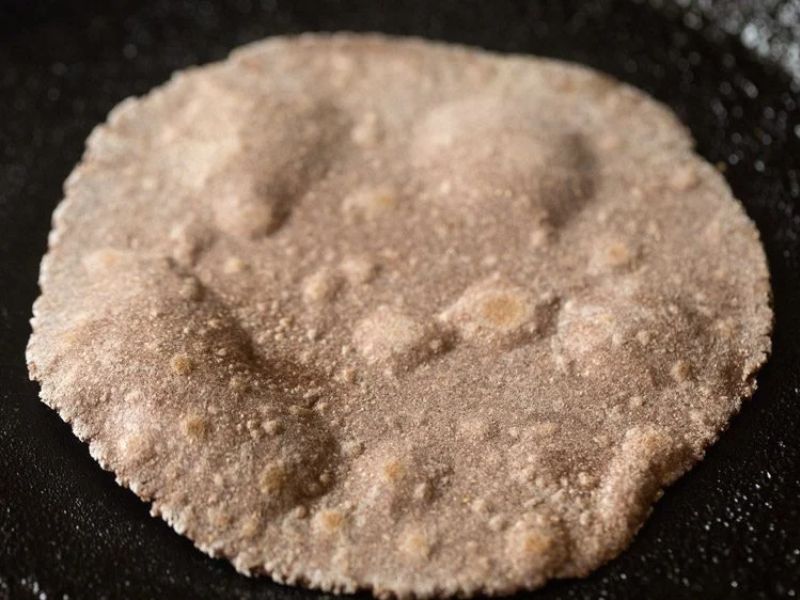
3. Flip the roti and cook the other side, ensuring it is slightly more cooked than the first, with some visible brown spots.
4. Hold the roti over direct fire using tongs, moving it around to roast the edges. This will cause the roti to puff.
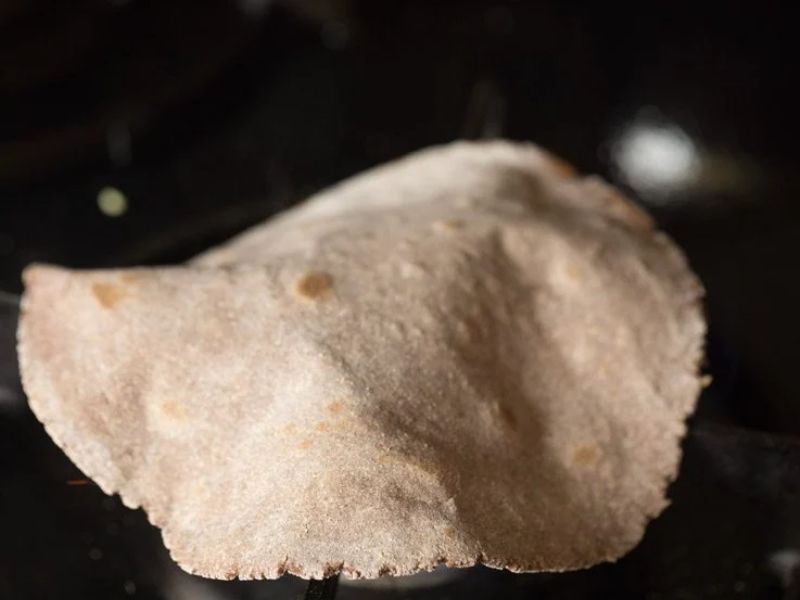
5. Once the roti has puffed, turn it again and briefly roast the other side over the fire. Avoid overcooking, as this can make the rotis dense.
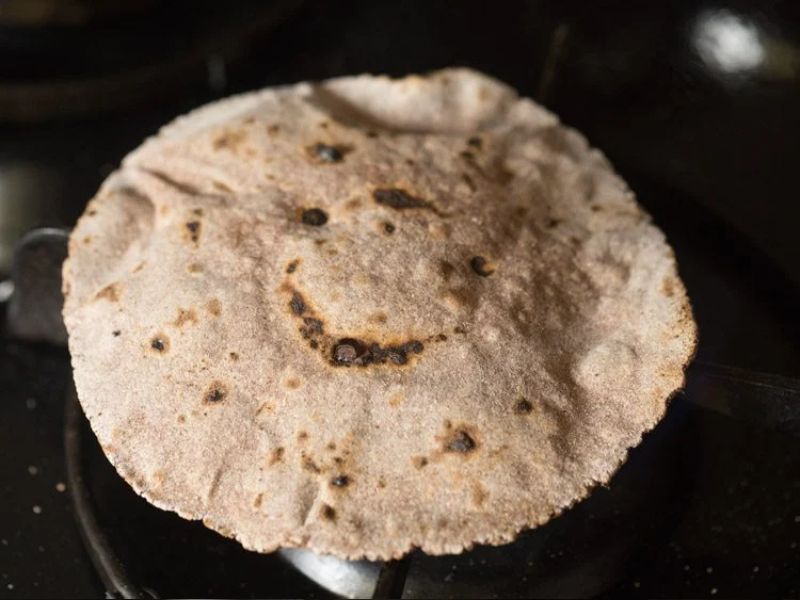
6. Remove the rotis from the heat and place them in a roti basket, roti dabba, or casserole.
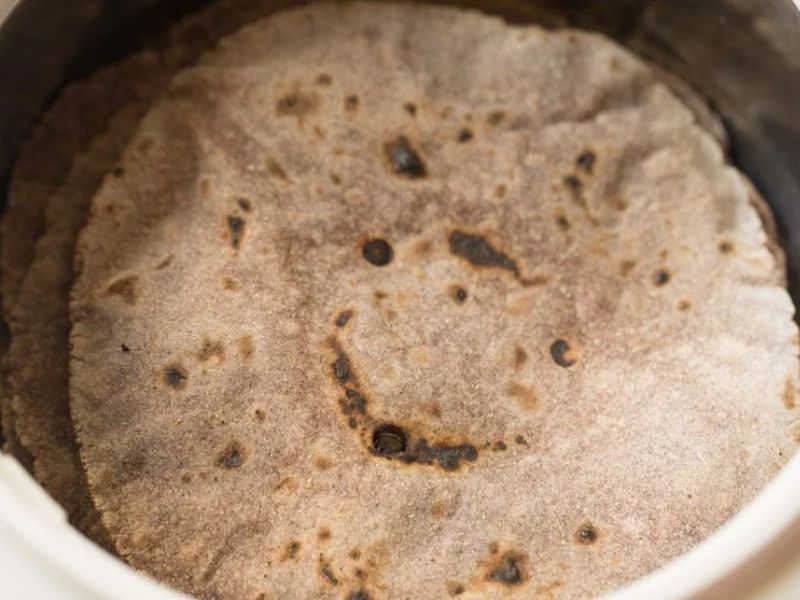
7. Spread some ghee on the rotis to keep them soft. Ideally, serve these nachni rotis hot with any Indian vegetable dish or dal of your choice.

8. If you are not serving them immediately, you can store them in a container that keeps food warm, such as a casserole or roti basket.


